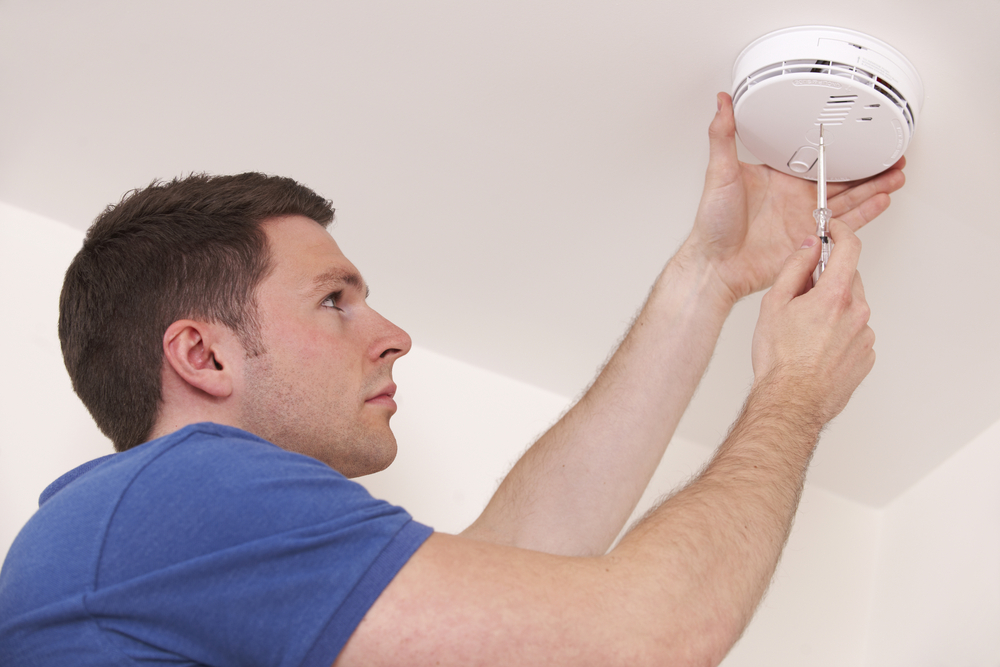Where to Install Carbon Monoxide Detectors
editCarbon monoxide (CO) is a colorless, odorless gas that is highly poisonous to humans and animals. It is produced when fuels burn incompletely, such as in cars, gas furnaces, stoves, and fireplaces. CO poisoning can lead to headaches, dizziness, nausea, unconsciousness, and even death. This is why every home should have carbon monoxide detectors, but many homeowners don’t know exactly where to install them.
In this blog, Robinson Heating and Air Conditioning Inc. shares how carbon monoxide detectors work, where to install carbon monoxide detectors, and the benefits of installing them in your home.
Why Carbon Monoxide Detectors are Needed in Homes
Carbon monoxide is a silent killer. According to the Centers for Disease Control and Prevention (CDC), more than 400 people die from unintentional CO poisoning each year, and another 20,000 visit the emergency room. CO detectors are the only way to detect this deadly gas, as it cannot be seen, smelled, or tasted.
How Carbon Monoxide Detectors Work
Carbon monoxide detectors work by detecting the level of CO in the air and sounding an alarm when it reaches a dangerous level. There are three types of CO detectors: plug-in, battery-operated, and hardwired.
- Plug-in CO detectors are usually installed near an electrical outlet and require a constant power source.
- Battery-operated CO detectors, on the other hand, run on batteries and can be installed anywhere. It is important to note that batteries should be changed annually to ensure the detector is functioning properly.
- Hardwired CO detectors are connected to your home’s electrical power supply. They also use batteries to provide backup power in the event of a utility outage.
Benefits of Installing Carbon Monoxide Detectors
Installing carbon monoxide detectors in your home has many benefits. First and foremost, they can save your life and the lives of your loved ones. CO detectors provide an early warning of a dangerous CO buildup, allowing you to evacuate the house before it’s too late.
Secondly, installing CO detectors can reduce insurance premiums. Many insurance companies offer discounts to homeowners who have installed CO detectors, as it demonstrates responsible homeownership.
Finally, having carbon monoxide detectors installed in your home can provide peace of mind. You can rest easy knowing that you and your family are protected from the dangers of CO poisoning.
Where to Install Carbon Monoxide Detectors
It’s important that you know where to install carbon monoxide detectors so that your family is protected.
- Carbon monoxide detectors should be installed on every level of your home, including the basement and attic.
- They should be placed in central locations, such as hallways, and at least 15 feet away from fuel-burning appliances and sources, such as furnaces, water heaters, and fireplaces.
- CO detectors should also be installed in sleeping areas, as CO poisoning can often occur while people are asleep.
If you are unsure where to install carbon monoxide detectors in your home, contact us for installation services. Let our professionals ensure your new carbon monoxide detectors are installed in optimal locations.
Carbon Monoxide Detector Maintenance
Once you know where to install carbon monoxide detectors, it’s essential that they are working correctly to protect you and your family. Here are tips on how to care for your carbon monoxide detectors.
Testing
Testing is the first step to ensure that your carbon monoxide detector is working correctly. You should test your detector at least once a month to make sure it is functioning correctly.
Testing is simple and straightforward and typically involves pressing the test button on the device and waiting for the alarm to go off.
Maintenance
Maintenance is another crucial aspect of ensuring your CO detector works correctly. Regularly cleaning your detectors can help ensure their proper functioning. Dust and debris can interfere with the sensors, leading to inaccurate readings or false alarms. A quick wipe with a soft cloth every few months can help keep them clean.
Furthermore, it’s vital to replace the batteries in the detector regularly. A good practice is to replace the batteries at least once per year. Most units have a low battery notification feature that will alert you when it’s time to replace the batteries.
Replacement
Despite regular maintenance, CO detectors do have a lifespan, and they will need to be replaced eventually. CO detectors typically last between five and seven years. As they age, their sensors lose their sensitivity and become less reliable.
Professional Carbon Monoxide Detector Installation Services
At Robinson Heating and Air Conditioning Inc., we understand the importance of protecting your family from the harms of carbon monoxide. Our technicians know where to install carbon monoxide detectors to increase safety in your home.
We offer professional installation services for carbon monoxide detectors, ensuring they are installed in the proper locations and function properly. Contact us today to schedule your carbon monoxide detector installation and breathe easier knowing you are safe from CO poisoning.

